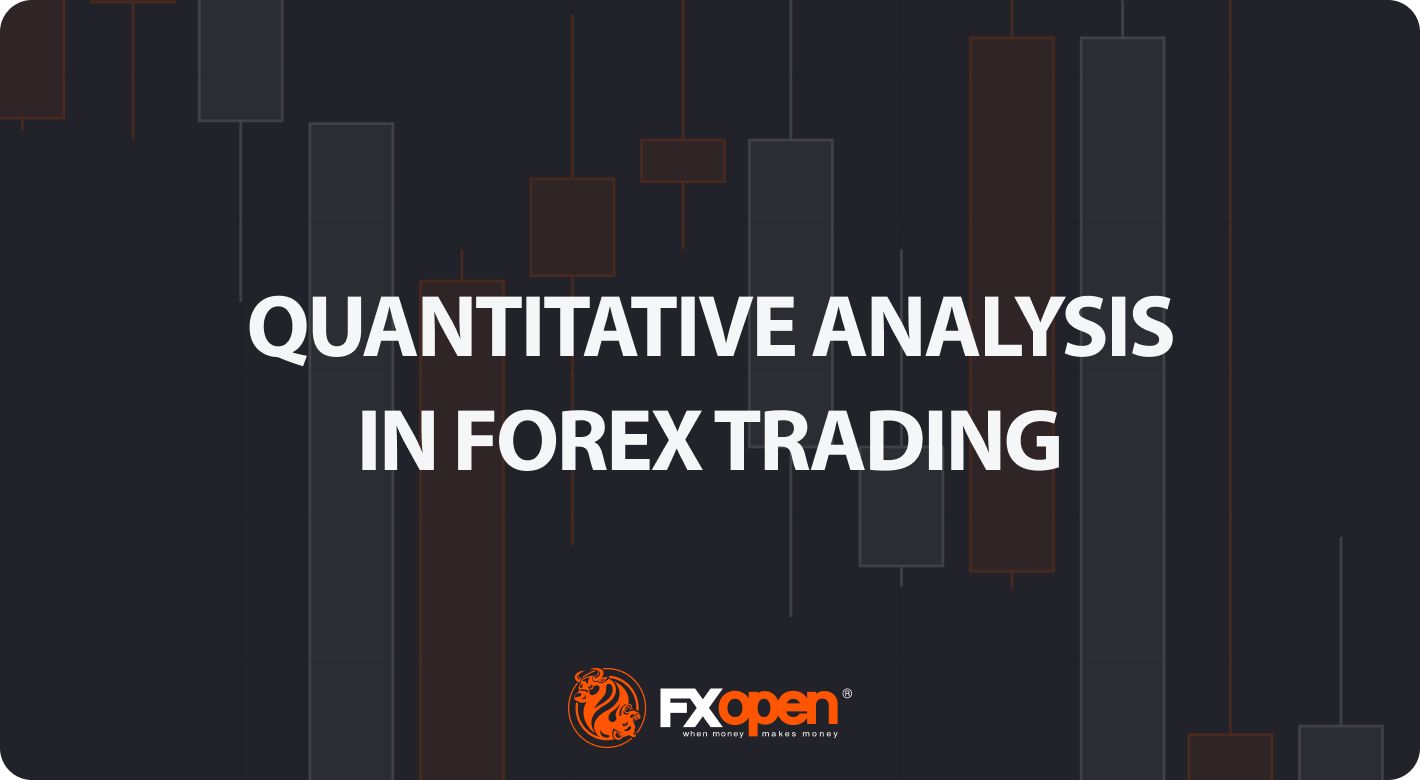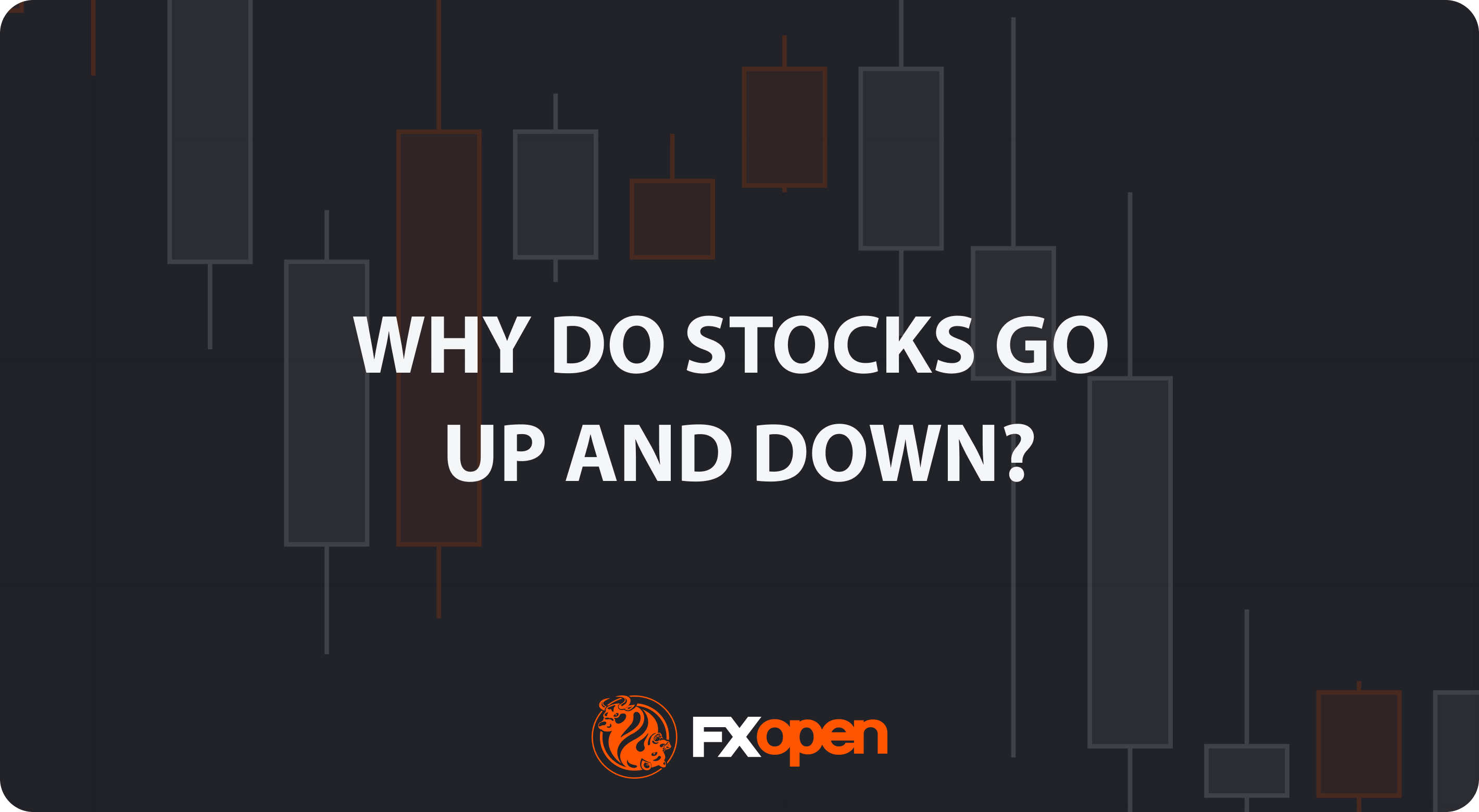FXOpen

Forex trading requires various methodologies to be employed to gain market insights and to allow participants to make informed decisions. One such crucial approach is quantitative analysis, a method that involves the use of mathematical models and statistical techniques to analyse financial assets. This article explores the significance of quantitative analysis in traditional forex markets, also mentioning some specifics related to the emerging domain of cryptocurrency* trading.
What Is Quantitative Analysis?
For traders engaged in quantitative forex trading, it's essential to grasp the fundamental principles that underpin this methodical approach.
How Do We Define Quantitative Analysis?
Quantitative analysis (QA), by definition, is a methodical and objective approach to examining financial assets and markets through the application of mathematical models, statistical techniques, and computational tools. It involves the systematic interpretation of numerical data to identify patterns, trends, and correlations, providing traders with a foundation for decision-making. Unlike qualitative analysis, which focuses on subjective factors such as management quality or market sentiment, quantitative analysis relies on quantifiable data to create informed trading strategies.
Key Data and Metrics Used
The QA process commences with comprehensive data collection, whereby a diverse range of financial data is gathered, for example, historical currency exchange rates and economic information. This extensive dataset serves as the foundation for subsequent analysis, enabling the identification of trends, patterns, and potential investment opportunities.
Some of the most widely utilised key metrics within the quantitative framework include technical indicators like Simple Moving Average, Exponential Moving Average, Relative Strength Index (RSI), Bollinger Bands, MACD, Stochastic Oscillator, Fibonacci Levels, Standard Deviation, and Correlation Coefficient. On the other hand, relevant economic data for forex traders includes interest rates, GDP, employment data, inflation rates, and trade balances.
Application of Quantitative Analysis in Forex Trading
Algorithmic trading is an example of how quantitative analysis can be applied in practice, employing computer algorithms to automate trading processes. These algorithms execute trades based on factors such as timing, price movements, liquidity changes, and market signals. The automated approach may enhance trading efficiency.
Consider a scenario where a quantitative analyst creates a trading model rooted in the technical analysis of currency exchange rates. Using machine learning algorithms, the model identifies market patterns, generating buy or sell signals. After successful backtesting with historical data, the analyst deploys the model in live markets through an automated trading platform. In another instance, the analyst may employ fundamental analysis, scrutinising interest rate differentials, inflation rates, GDP growth, and other macroeconomic indicators impacting currency exchange rates.
Curious to try a quantitative-analysis-based strategy? Try the free TickTrader trading platform.
Benefits of Quantitative Analysis in Trading
Quantitative analysis offers several key benefits that contribute to its increasing use in trading:
- Systematic Decision-Making: Quantitative analysis provides a systematic approach to decision-making, allowing traders to base their strategies on empirical evidence rather than subjective judgements.
- Efficiency and Automation: The use of quantitative models enables automation in trading and enhances efficiency by executing trades based on predefined criteria, reducing the need for manual intervention.
- Risk Management: Quantitative analysis facilitates the development of risk models that help traders measure and quantify various risk exposures within a portfolio. This contributes to better risk management and the implementation of mitigation strategies.
- Backtesting and Optimisation: Traders can backtest quantitative models using historical data to assess their performance under different market conditions.
- Objective Evaluation: Quantitative models provide an objective evaluation of market conditions, helping traders remove emotional biases from their decision-making processes.
- Incorporation of Multiple Variables: Quantitative models can incorporate a wide range of variables simultaneously, allowing traders to analyse complex relationships and factors influencing financial markets.
Some Drawbacks
Along with the benefits of quantitative models, they also have some pitfalls that traders need to consider.
- Data Dependency: One of the primary drawbacks is the heavy reliance on the quality and availability of numerical data. Inaccurate, outdated, or incomplete data can compromise the integrity of the analysis.
- Complexity: Quantitative analysis methods and models can be inherently complex, demanding a high level of expertise for development, interpretation, and action. This complexity poses a challenge in interpreting findings effectively.
- Incomplete Perspective: The absence of qualitative insights may result in having the 'what' without a clear understanding of the 'why' or 'how.' Qualitative analysis becomes essential to complement this inherent blind spot.
- Over-Reliance on Historical Data: Quantitative analysis often relies extensively on historical data to predict future outcomes. However, rapidly changing markets or unforeseen circumstances can break an established pattern.
Specifics When Applying Quantitative Analysis in Cryptocurrency* Trading
At FXOpen, you can trade currency pairs and cryptocurrency* CFDs. Applying quantitative analysis to cryptocurrency* trading involves unique considerations due to the distinctive characteristics of the cryptocurrency* market.
- Volatility and Liquidity: Quantitative models used in cryptocurrency* trading need to account for the rapid price fluctuations in crypto* assets and ensure that strategies are adaptable.
- 24/7 Market Operations: Cryptocurrency* markets operate 24/7. Quantitative models must be designed to function seamlessly in continuous trading environments.
- Data Sources and Quality: Cryptocurrency* markets rely heavily on data from various exchanges. Ensuring the accuracy and consistency of data from these sources is crucial. For newly launched projects, historical data may be missing completely.
- Market Sentiment Analysis: Cryptocurrency* markets are strongly influenced by sentiments and news within the crypto community. Quantitative models may benefit from incorporating sentiment analysis tools to gauge the overall mood.
Concluding Thoughts
Quantitative analysis stands as a powerful tool in a trader’s arsenal, offering systematic methodologies to navigate the complexities of financial markets. By acknowledging both the strengths and limitations, market participants can harness the full potential of quantitative analysis methods, integrating them strategically and as a complementary element to qualitative insights for more comprehensive decision-making. Ready to test some quantitative trading strategies? You can open an FXOpen account and try out the possibilities.
*At FXOpen UK and FXOpen AU, Cryptocurrency CFDs are only available for trading by those clients categorised as Professional clients under FCA Rules and Professional clients under ASIC Rules, respectively. They are not available for trading by Retail clients.
This article represents the opinion of the Companies operating under the FXOpen brand only. It is not to be construed as an offer, solicitation, or recommendation with respect to products and services provided by the Companies operating under the FXOpen brand, nor is it to be considered financial advice.
Stay ahead of the market!
Subscribe now to our mailing list and receive the latest market news and insights delivered directly to your inbox.








